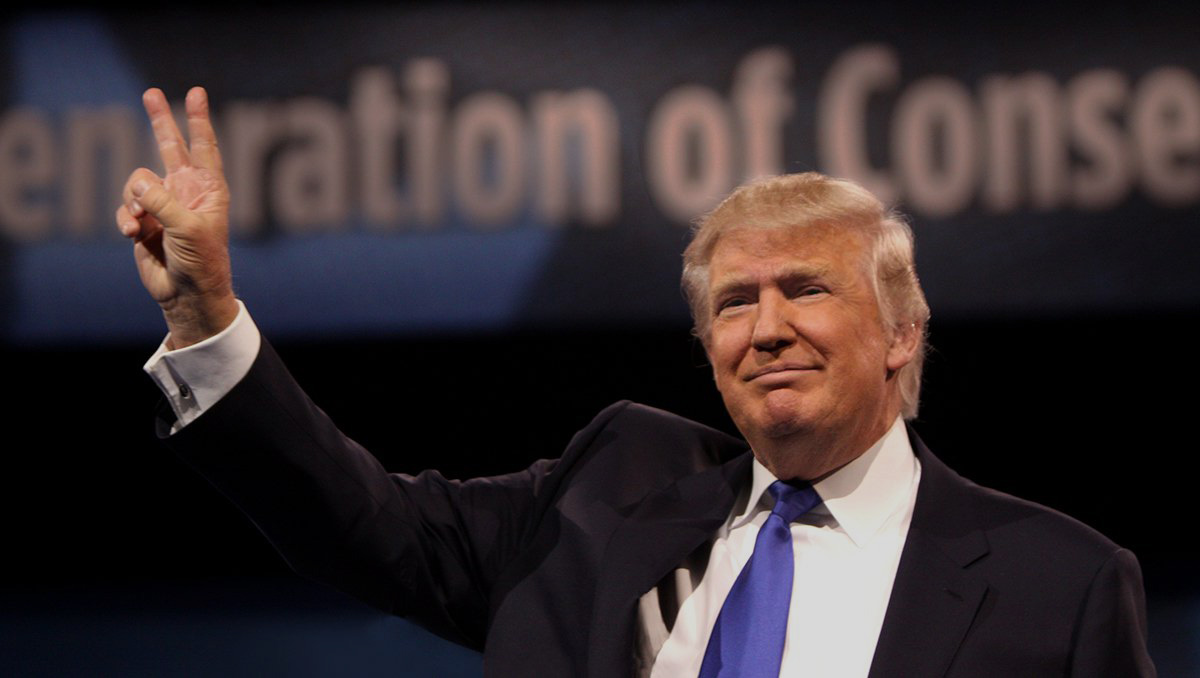Will Wisconsin Decide the 2020 Election?
All signs suggest this state could determine whether Trump wins reelection.
If the 2020 election were decided by the popular vote there would be nothing for pundits to discuss: Donald Trump would be a dead duck. He lost the popular vote by 2.9 million in 2016 and has been underwater, with well less than 50 percent of voters approving of him, for his entire time as president.
But the race will be decided by the electoral college, and it’s entirely possible Trump could lose by as many as five million votes and still win the electoral college, some analysts suggest. That’s because the continued growth of population in safely blue states like California is irrelevant, with no impact on the electoral college total.
Which is why Wisconsin is so incredibly important. With most of the map of states safely blue or red, a small list, including Michigan, Pennsylvania, Iowa, Arizona, Nevada, North Carolina and New Hampshire, could decide the election.
And in a recent projection of the 2020 election results by the Democratic super-PAC, Priorities USA, it found that “if the election were held today,” only one state was too close to call: Wisconsin.
Trump’s 2016 victory came down to three squeaker states: he won Michigan by only 10,704 out of 4.7 million votes, Wisconsin by 22,748 out of about 2.9 million cast and Pennsylvania by 44,292 votes out of about 6.1 million. He had the suicidal tendencies of liberals to thank for two of those wins, as Green Party nominee Jill Stein garnered more votes than Clinton lost by in Wisconsin and Michigan.
All three states have some of the nation’s highest shares of white voters without college degrees, as NBC News pointed out, and those tend to be Trump voters.
Yet all signs suggest Michigan and Pennsylvania will be tough for Trump in 2020, as Democrats swept Senate and governors’ races in those two states in 2018 by healthy margins while flipping two House seats in Michigan and four in Pennsylvania.
But Wisconsin saw a far smaller Democratic edge, of about one percent for Gov. Tony Evers and Attorney General Josh Kaul. Yes, incumbent Sen. Tammy Baldwin won by a much bigger margin, but that was a testament to this state’s voters still being willing to split the ticket. The true Democratic margin for the state, computed by our Data Wonk columnist, was 52 percent to 48 percent, suggesting a two percentage change the other way (in a bigger turnout election) could reelect Trump.
If Trump does lose Michigan and Pennsylvania, which seems likely, he could still win the Electoral College, so long as he carries Wisconsin and every other place he won in 2016. In that case he would win the Electoral College by two votes, 270-268.
In short, Wisconsin looms as the most important state in America in the 2020 election. Yes, there’s a chance Democrats might flip a state like Iowa or North Carolina, or Trump might flip one like New Hampshire, but both parties will have trouble getting the magic number of Electoral College delegates without Wisconsin.
“Wisconsin was the tipping-point state in 2016, and it seems to hold that distinction now, at least based on the president’s approval rating among 2018 midterm voters,” a recent New York Times analysis of the 2020 election found.
The idea that Wisconsin is likely to be a dead heat in 2020 might seem hard to believe when you look at the polls during Trump’s time in office, for he has been consistently underwater, with less than 50 percent approval of the voters. The Morning Consult has polled the state regularly and when Trump took office he had a net favorable rating which changed to negative within a few months, and quickly jumped to very negative (40 percent approval, 55 percent disapproving) by August 2017. He’s remained underwater ever since, bobbing between a 40 percent and 44 percent approval rating.
The Marquette University Law School poll, the premier pollster in Wisconsin, has measured Trump’s approval rating 13 times during his presidency and he’s never been above water, with his approval bobbing back and forth between 41 and 47 percent, a slightly higher average than the Morning Consult. His approval rating has been even lower among independents or voters who say they lean toward one party, the polls have found, ranging from 34 percent to 45 percent approving of Trump.
But an election isn’t just a vote to approve or disapprove the President, it’s a contest between two candidates, and Trump will try to hike his opponent’s negatives to the same dismal peak as his own. He did that successfully in 2016 in Wisconsin, when polls showed only 48 percent of voters approved of candidate Trump, yet he carried the state. He did the same in many other states, where his disapproval rating showed him underwater, but it turned out voters disapproved of Hillary Clinton even more.
The Times analysis, looking at various polls as well as the 2018 election exit polls, did an average showing that “the president’s approval rating was 47.1 percent in Wisconsin, above his 45.5 percent nationwide… the president’s advantage in the Electoral College, at least by his approval rating, is fairly similar to what it was in 2016.”
Trump “is in better shape now than he was at any time in the 2016 cycle” in Wisconsin, MU Law School pollster Charles Franklin told the Times, “and what’s more, Republicans in Wisconsin, who voted for [Ted] Cruz in the 2016 primary, are more united behind the president than they were in his 2016 campaign,” the Times noted.
Should Trump’s 47 percent in Wisconsin rise to 50 percent on election day, that could be decisive, the Times suggested, because “the Democrats do not have an obviously promising alternative if Wisconsin drifts to the right. In 2016, Florida was that obviously promising alternative: It voted for Mr. Trump by 1.2 percentage points, compared with his 0.8-point victory in Wisconsin. But all of the measures indicate that Florida has shifted to the right of the nation since 2016, at least among 2018 midterm voters.”
If Wisconsin decides the election that means the nation’s fate gets down to a handful of this state’s counties and how they vote. Trump needs big support from the WOW belt of Waukesha, Ozaukee and Washington counties to offset Democratic Milwaukee County and may well get it. “The president’s average approval rating in the Milwaukee media market stands at 48 percent — virtually unchanged from what it was in 2016, in a compilation of Marquette University polls since October,” the Times reports.
But Trump’s approval “has declined in the rest of the state, according to both the Marquette data and the exit polls,” the story noted.
While Walker lost to Evers he carried the swing areas of the Fox Valley and split Racine and Kenosha counties, losing the latter (which Trump barely won along with a win in Racine County in 2016). Trump also won the swing area of southwestern Wisconsin, which Walker carried in 2014 and lost in 2018. A swing right or left in any of of these three areas could decide the 2020 election.
The one factor the Times doesn’t talk about is the incredible Dane County turnout in 2018, which carried the day for Evers, while the WOW counties did not turn out as much for Walker in 2018. All signs suggest both parties’ voters will be super motivated in 2020, which could create the biggest turnout modern-day America has ever seen. And nowhere will that turnout be more important than in Wisconsin.
If you think stories like this are important, become a member of Urban Milwaukee and help support real independent journalism. Plus you get some cool added benefits, all detailed here.
Murphy's Law
-
The Last Paycheck of Don Smiley
 Dec 17th, 2025 by Bruce Murphy
Dec 17th, 2025 by Bruce Murphy
-
Top Health Care Exec Paid $25.7 Million
 Dec 16th, 2025 by Bruce Murphy
Dec 16th, 2025 by Bruce Murphy
-
Milwaukee Mayor’s Power in Decline?
 Dec 10th, 2025 by Bruce Murphy
Dec 10th, 2025 by Bruce Murphy






















“He had the suicidal tendencies of liberals to thank for two of those wins, as Green Party nominee Jill Stein garnered more votes than Clinton lost by in Wisconsin and Michigan.”
…”suicidal” is a tad harsh. At least they voted.
Don’t forget the 92,000 from 2012 that just didn’t vote for president in 2016 (60,000 of them from heavily Democratic Milwaukee).
I think that the Mueller Report has shown that the influence of Russian tampering in the 2016 presidential race on behalf of Trump could have done a lot of suppressing some of the 60 k Milwaukee voters who did not vote in 2016.
My phone rang while I was watching the Mueller hearings on Wednesday. The call was from the office of Senator Ron Johnson, inviting me to drop what I was doing and join him in a telephone town hall. Do you think the timing of this call was a coincidence?
Ruy Teixeira at American Prospect provides analysis on 8/29/2019 about how third party voters actually affected the 2016 race. Stein only took 1% of the vote here in Wisconsin! Not enough to make a difference for Hillary. In short, third party votes, redistributed, favored Trump over Hillary. His conclusion:
“The result: Trump still wins the electoral vote, only by a larger margin, 309–229. This is because he still carries the key states of Michigan, Pennsylvania, and Wisconsin, while also carrying New Hampshire by a narrow margin. This makes sense when one considers the actual distribution of the third-party vote in these states: Michigan, Johnson 3.6 percent/Stein 1.1 percent; New Hampshire, Johnson 4.9/Stein .9; Pennsylvania, Johnson 2.4/Stein .8; Wisconsin, Johnson 3.6/Stein 1.”
Full AP article here: https://prospect.org/blog/on-tap/did-third-parties-sink-hillary-clinton-2016